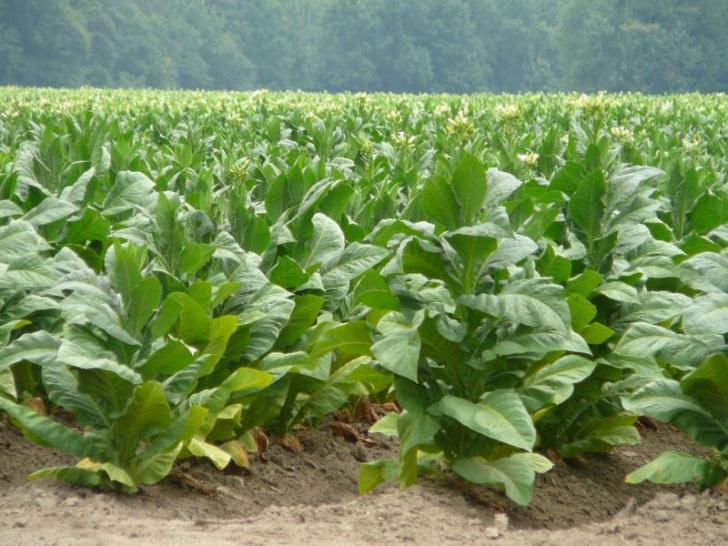News / National
Tobacco crop under threat from fungal disease
7 hrs ago | Views

Zimbabwe's tobacco farmers are facing a major crisis as a destructive fungal disease, Fusarium Wilt and Root Rot (FWRR), spreads across fields, threatening the country's lucrative tobacco industry.
Farmers say they are ill-equipped to combat the disease, which is caused by soilborne fungi from the Fusarium genus and thrives in the warm, humid conditions typical of many tobacco-growing regions.
Zimbabwe Tobacco Growers Association president George Seremwe said the outbreak is causing widespread anxiety among farmers due to a lack of knowledge on effective control measures.
"Our call as tobacco farmers leadership is for consultation with experts in the field of tobacco production," Seremwe said. "These include agriculture extension officers and the Tobacco Research Board (TRB), so that they can lead the way on what pesticides can be used. Currently, we are not aware and there is lack of information on preventive measures."
At least seven Fusarium species linked to the disease have been identified in Zimbabwe, including F. nicotianae, F. falciforme, F. solani, F. longifundum, and F. chlamydosporum. The disease is known to be particularly aggressive in sandy-loam soils and worsens with poor field sanitation and continuous monocropping.
Dr Charles Karavina, head of Plant Health and Agricultural Resilience, explained that movement of contaminated soil and infected plant material can rapidly spread the disease between fields.
"Farmers must practise crop rotation while maintaining strict hygiene in their fields," Karavina advised. "Leaving infected stalks in the field or using contaminated water can escalate the problem. They must enhance the use of resistant tobacco varieties once they become available."
TRB plant pathologist Mike Maranda said the board is actively developing solutions, including new fungicides and resistant plant varieties.
"We are currently testing several fungicides which will be made available to farmers in the next tobacco season," said Maranda. "Our breeding programme is also focused on producing tobacco varieties resistant to both FWRR and Black Shank."
Maranda also encouraged farmers to monitor their crops closely and learn to identify the symptoms early.
"Typical signs include yellowing and drying of leaves, stunted growth, and eventual plant death," he said. "Often, symptoms appear on one side of the plant. A distinct chocolate brown or purple discoloration in the vascular tissue from the root to the stem is a tell-tale sign."
In severe cases, infected stems may bend at the bud, resulting in a crook-neck appearance. Plants typically dry out and die, with leaves curing on the stalk instead of rotting naturally.
At the time of publishing, the Tobacco Industry Marketing Board (TIMB) had not yet responded to inquiries regarding its plans to support farmers amid the outbreak.
Zimbabwe is one of Africa's top tobacco producers, with the crop being a major foreign currency earner. Experts warn that failure to contain the outbreak could result in massive crop losses and economic setbacks for thousands of farmers.
Farmers say they are ill-equipped to combat the disease, which is caused by soilborne fungi from the Fusarium genus and thrives in the warm, humid conditions typical of many tobacco-growing regions.
Zimbabwe Tobacco Growers Association president George Seremwe said the outbreak is causing widespread anxiety among farmers due to a lack of knowledge on effective control measures.
"Our call as tobacco farmers leadership is for consultation with experts in the field of tobacco production," Seremwe said. "These include agriculture extension officers and the Tobacco Research Board (TRB), so that they can lead the way on what pesticides can be used. Currently, we are not aware and there is lack of information on preventive measures."
At least seven Fusarium species linked to the disease have been identified in Zimbabwe, including F. nicotianae, F. falciforme, F. solani, F. longifundum, and F. chlamydosporum. The disease is known to be particularly aggressive in sandy-loam soils and worsens with poor field sanitation and continuous monocropping.
Dr Charles Karavina, head of Plant Health and Agricultural Resilience, explained that movement of contaminated soil and infected plant material can rapidly spread the disease between fields.
"Farmers must practise crop rotation while maintaining strict hygiene in their fields," Karavina advised. "Leaving infected stalks in the field or using contaminated water can escalate the problem. They must enhance the use of resistant tobacco varieties once they become available."
"We are currently testing several fungicides which will be made available to farmers in the next tobacco season," said Maranda. "Our breeding programme is also focused on producing tobacco varieties resistant to both FWRR and Black Shank."
Maranda also encouraged farmers to monitor their crops closely and learn to identify the symptoms early.
"Typical signs include yellowing and drying of leaves, stunted growth, and eventual plant death," he said. "Often, symptoms appear on one side of the plant. A distinct chocolate brown or purple discoloration in the vascular tissue from the root to the stem is a tell-tale sign."
In severe cases, infected stems may bend at the bud, resulting in a crook-neck appearance. Plants typically dry out and die, with leaves curing on the stalk instead of rotting naturally.
At the time of publishing, the Tobacco Industry Marketing Board (TIMB) had not yet responded to inquiries regarding its plans to support farmers amid the outbreak.
Zimbabwe is one of Africa's top tobacco producers, with the crop being a major foreign currency earner. Experts warn that failure to contain the outbreak could result in massive crop losses and economic setbacks for thousands of farmers.
Source - newsday

































